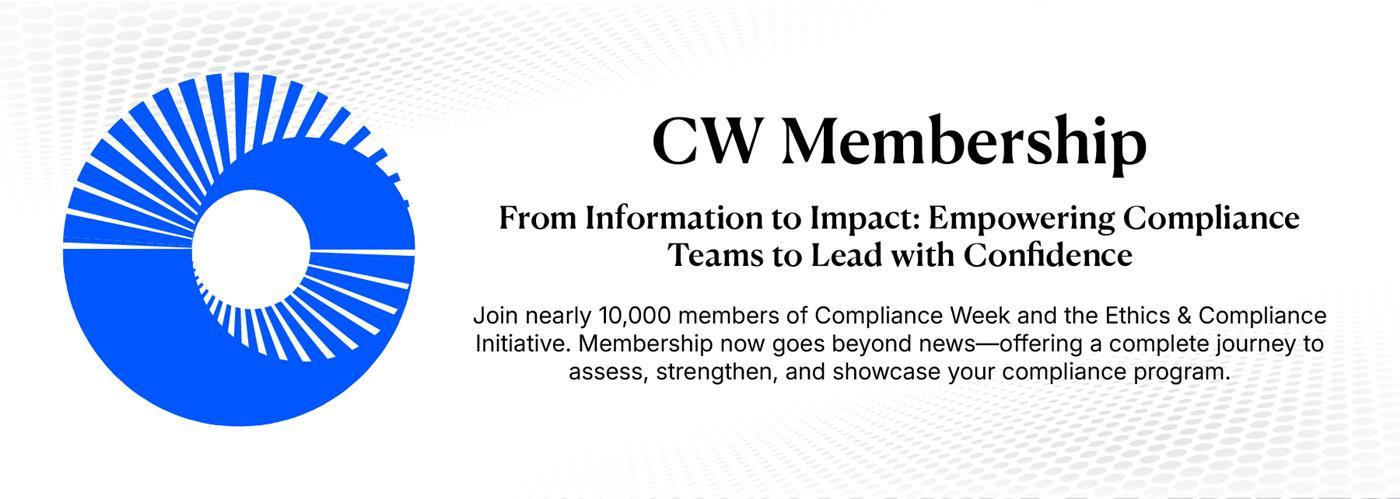- Home
-
News
- Back to parent navigation item
- News
- National Compliance Officer Day 2025
- Accounting & Auditing
- AI
- AML
- Anti-Bribery
- Best Practices
- Boards & Shareholders
- Cryptocurrency and Digital Assets
- Culture
- ESG/Social Responsibility
- Ethics & Culture
- Europe
- Financial Services
- Internal Controls
- Regulatory Enforcement
- Regulatory Policy
- Risk Management
- Sanctions
- Surveys & Benchmarking
- Supply Chain
- Third Party Risk
- Whistleblowers
- Opinion
- Benchmarking
- Certification
- Events
- Research
- Awards
-
CW Connect
- Back to parent navigation item
- CW Connect
- Sign In
- Apply
- Membership
Benchmark survey: Top compliance programs are data-driven
By  Jaclyn Jaeger2018-06-06T10:00:00
Jaclyn Jaeger2018-06-06T10:00:00

A new survey from Convercent and Compliance Week indicates that the top-performing compliance departments increasingly are starting to invest in technology solutions that support a data-driven program.
THIS IS MEMBERS-ONLY CONTENT
You are not logged in and do not have access to members-only content.
If you are already a registered user or a member, SIGN IN now.
Related articles
-
 Opinion
OpinionWhat the Copilot Usage Report 2025 Means for Corporate Compliance
2025-12-18T18:48:00Z By Tom Fox
Microsoft’s Copilot Usage Report 2025 offers compliance professionals a rare, data-driven look at how artificial intelligence is actually being used by millions of people, rather than how organizations assume it is being used.
-
 Opinion
OpinionEmerging antitrust risks in the expanded use of AI
2025-12-16T19:24:00Z By Lee F. Berger and Robert Klotz, CW guest columnists
Concerns over competitors using AI pricing tools to fix prices have dominated antitrust discussions in the U.S. and EU. Recent cases show how algorithmic pricing might enable unlawful coordination.
-
 Webcast
WebcastCPE Webcast: Hot Topics in Risk and Compliance: AI, Analytics, and Emerging Audit Technologies
2025-12-16T14:00:00Z Provided by Workiva
Join experts from KPMG, Cisco, and Workiva as they explore how audit, accounting, and finance professionals can leverage a technology mix of data analytics, gen AI, and other tools to ramp up efficiency and strengthen control effectiveness.
More from Surveys & Benchmarking
-
 Survey
SurveyHow Ethics & Compliance Teams Are Adopting Artificial Intelligence (AI) Tools
2025-12-02T20:36:00Z Provided by konaAI
This survey will explore how ethics & compliance (E&C) officers are adopting and leveraging artificial intelligence (AI), particularly generative AI, within their programs.
-
 Survey
SurveyInside the Mind of the CCO survey 2025
Provided by Compliance Week
Compliance Week’s 7th annual Inside the Mind of the CCO survey will take a snapshot of what is happening in the compliance profession, but it can’t happen without you. The survey results will deliver insights and benchmarking data to the compliance community. Thanks in advance for your time!
-
 Premium
PremiumInside the Mind of the CCO: Compliance in an uncertain world, still with fuzzy reporting lines
2025-05-27T17:13:00Z By Ian Sherr
The world is rapidly changing. The European Union is stepping up rules and enforcement, while the United Kingdom is charting its own course. And now the United States is taking a third tack, with unclear regulation enforcement under a mercurial Donald Trump’s second term as president underway.
- Terms and Conditions
- Privacy Policy
- Do Not Sell My Info
- © 2025 Compliance Week
Site powered by Webvision Cloud






